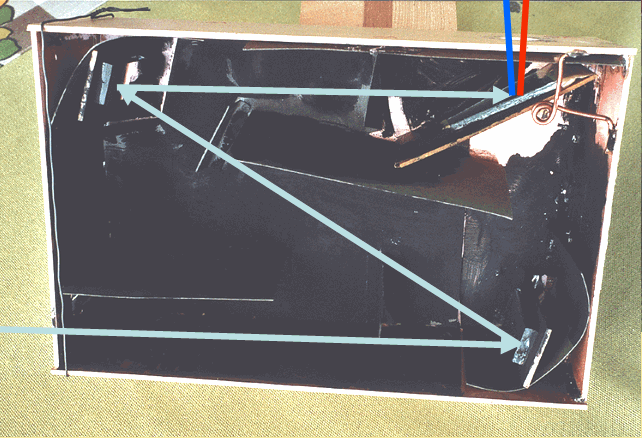
The CD ROM Spectroscope (Mk III version)
Joachim Köppen Kiel/Strasbourg/Illkirch Summer 2004

Thus, the light falls onto the CDROM nearly parallel to its surface, and we observe it close to our eye, from nearly perpendicular direction. This allows to let a greater number of data tracks to be involved in the diffraction, hence a brighter spectrum is produced. Also, the flat incidence makes a somewhat greater spectral resolution. Both aspects make it easier to distinguish the spectral lines, in particular when one wants to photograph the spectrum with a single lens reflex camera placed at the observation aperture. The reason for employing two mirrors is to give the light path between slit and eye via the CDROM a length convienent for viewing (about 40 cm).
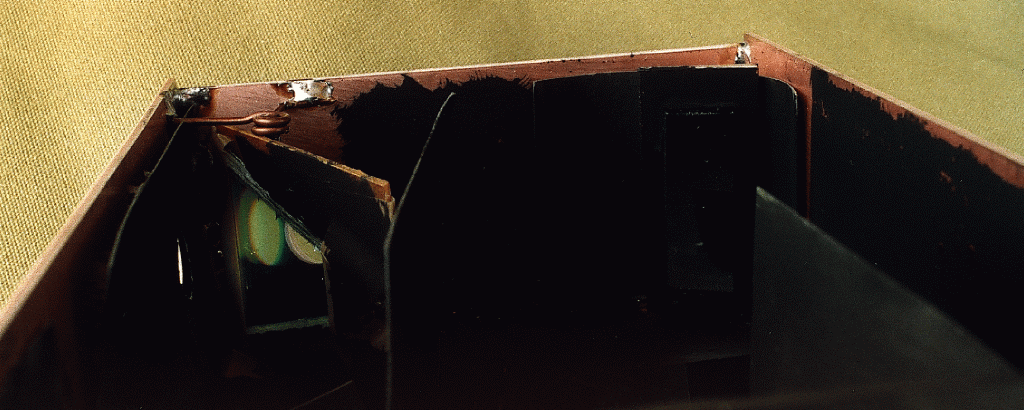
Here is a view towards the CDROM (left) in which the observation aperture is reflected, and the first mirror (right).
The box is made of copper-clad printed circuit board, which can easily be soldered together to make a stiff and sturdy box. The front silvered mirrors are pieces cut from a long mirror scrounged from an old fax-machine. The mirrors are glued to small pieced of printed circuit board, when then are soldered into the box. The entrance slit is (at the moment) just two pieces of thin opaque plastic with clean straight edges, separated about 1 mm. The piece of CDROM (about one-eighth of a disk) is fixed with adhesive tape on a piece of printed circuit board which is soldered on a piece of 2mm diameter copper wire to function as an axle and - outside of the box - a lever to change and indicate the orientation of the CDROM. In this way, one can rotate the diffraction grating, as to show the different spectral orders. The small loop of stiff copper wire is the other support of the axle. All major interior surfaces are covered with some dark cardboard, which is painted black (using guache water colour paint) as are all the shiny surfaces of copper and soldering tin. The box has a lid - also covered with black painted cardboard, having tongues which fit in between the cardboard and the printed circut panels to form a light tight enclosure. Inside the box, there are two cardboard screens to act as baffles to separate the crisscross lightpath. In addition, there are some more which limit the lightpath in vertical direction. All these measures prevent straylight.
Below are photographs of the spectrum of the sun. The spectroscope was directed directly towards the sun, thus a brillant spectrum was visible in the (single lens reflex) camera. I used a 100 mm telephoto lens to give some enlargement of the spectrum. The aperture was fully open - it serves no function here. The exposure time on ordinary 200 ASA colour negative film was 1/30th of a second. The focussing is not perfect yet: I tried systematically various settings, with the best results with distances betwen 2 and 1.4m - note that the optimal focus depends on the orientation of the grating as well as the wavelength. One needs a bit further experimentation, but film does not cost much...
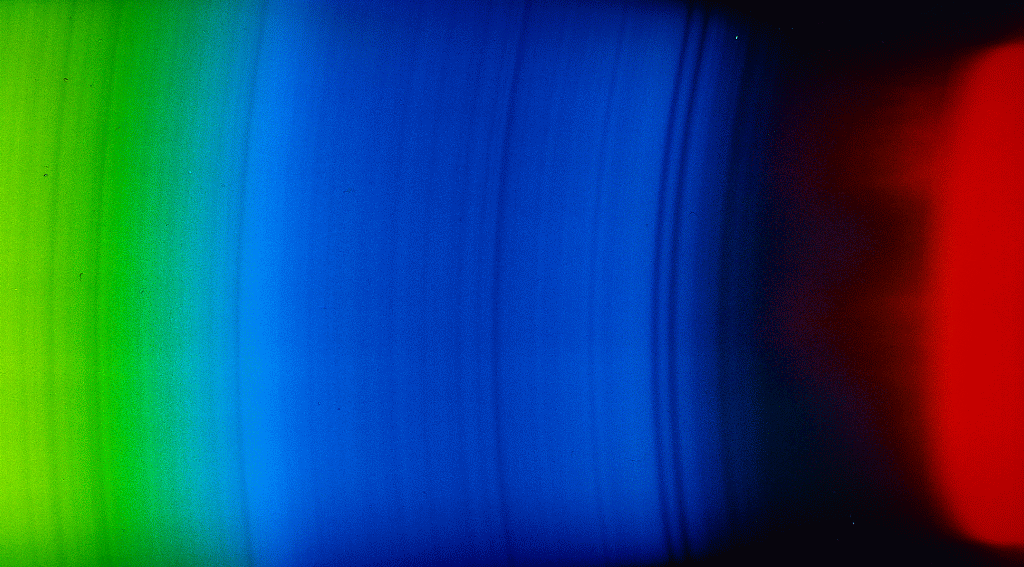
From the first order there's a bit of red on the right hand side. To the left, there is the violet and blue part of the second order, with the prominent violet calcium H and K lines. Note that one can also see the L line from iron at 3820 A which is even further in the UV! The bunch of lines in the blue is around Hgamma, the line at the border between blue and green is Hbeta at 4681 A. The concentration of lines in the green is the magnesium b triplet
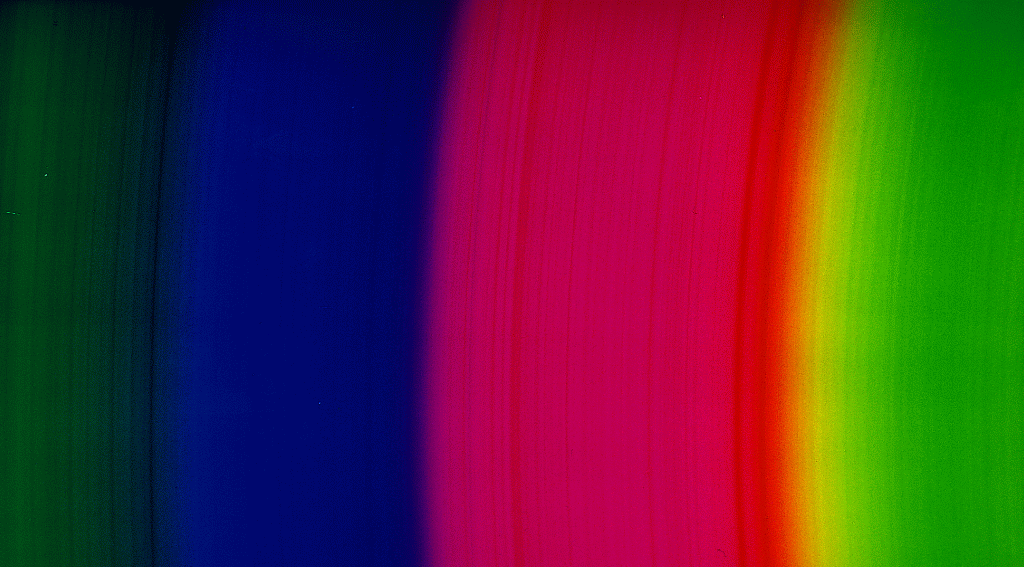
Continuing in the second order, one should see the sodium D line at the border between yellow and red - but much more prominent are the calcium H and K lines from the third order! The red of the second greatly overlaps with the violet of the third, producing a pinkish tone. This is, by the way, how pink LEDs are made: they are a combination of a violet and a red one! Near the violet edge of the pink region we distinguish the lines around Hgamma of the third order, but still closer to the border one finds a narrow blue line:
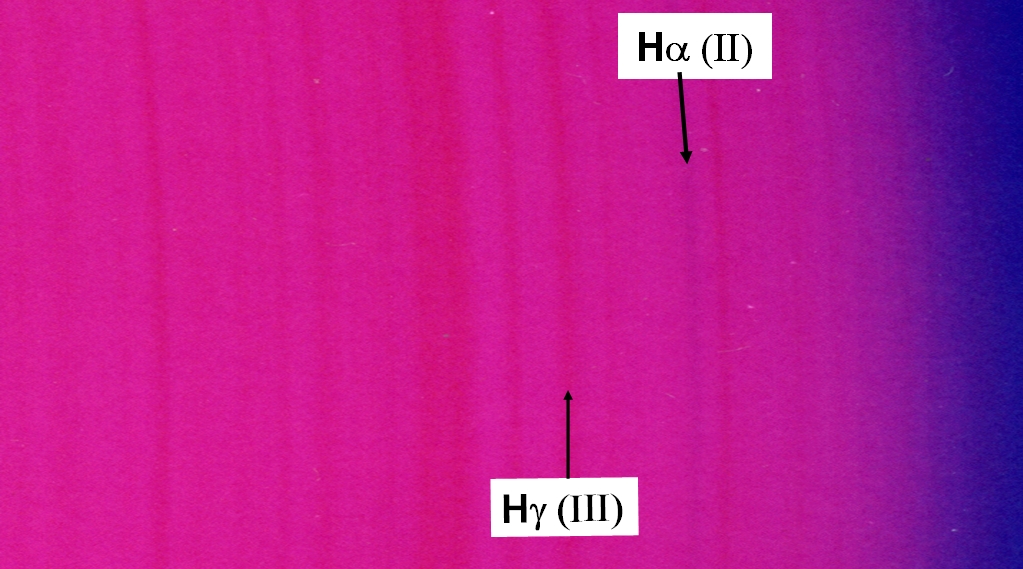
This is the Halpha line in the red of the second order; while the nearby red continuum is turned pink, in the dark line centre we see only the blue light from the third order continuum! Further into the third order, we see Hbeta prominent on the blue/green border, with many other fainter lines clearly visible. Many of there are lines from iron atoms.
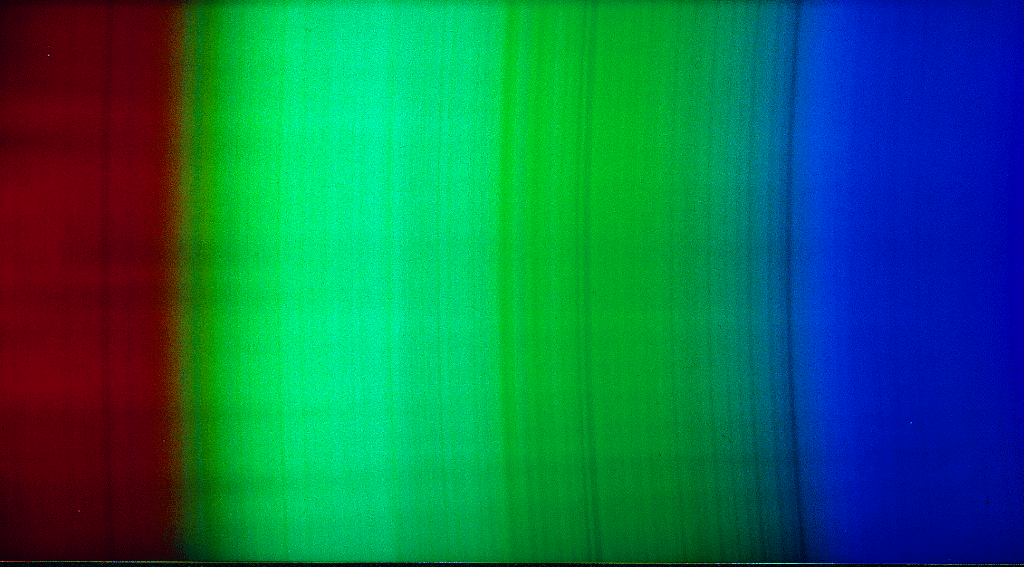
The blue and green third order are also visible in the third picture. In the green region we see the broadish feature of the three magnesium b lines, with one line on the left clearly separated from the doublet to the right. Just to its left - close to the centre of the picture - the strong broad calcium H line from the fourth order is noticed, with the K line more towards the magnesium triplet. The exposure time was not long enough to let the yellow region show up as yellow, but we see already in the red region a dark band: the sodium D doublet. Seen with the eye, one clearly distinguishes two well separated lines. These pictures need further improvement of the focus...
A proper adapter that fits the telephoto lens of my camera allows to take long time exposures of objects much less brillant than the sun. Below is the first order spectrum of the mercury-vapour streetlamp in the street below. I used a 75 mm focal length objective focussed to 1.1 m -- focussing the emission lines is much easier than the solar absorption lines! The exposure time was 10 minutes with a no-noname 200 ASA colour film: To the right, the violet lines at 436 and 405 nm from the second order can be seen.
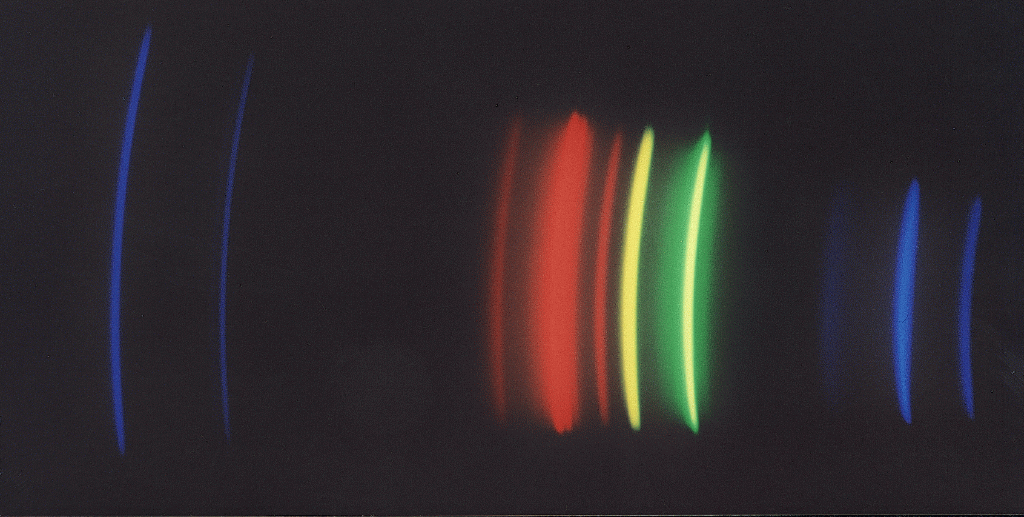
A composite picture of the second order spectrum, done with a 135 mm lens, focussed to 2.2 m. The exposure times of 7 minutes were a bit short, but gave already good results. The yellow doublet (at 5769.6 and 5789.7 A) is clearly resolved! Next to the red line, the 405 nm line from the third order appears.
